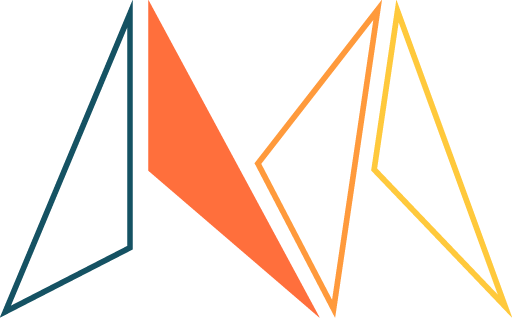Summary
This teaching activity aims to create an awareness among the students of the more-than-human actors surrounding us. The students begin with an individual “art of noticing” exercise to observe and notice their entanglements with more-than-humans in everyday life. Thereafter, they form groups and develop entanglement maps that capture their joint experiences. Lastly, the groups exhibit their documentations by placing them on the “Wall of Entanglements”. Each group presents their findings and reflects on how the new insights they have gained might influence their design processes.
Motivation
There are many questions that students face when stepping into the field of more-than-human design aiming to work with more-than-human perspectives in their design processes. According to entanglement theories (Haraway, 2016), we, humans, act and live in collectives of humans and nonhumans that live in entanglement with each other in a web of life. If we assume this worldview, we are not just designing for humans who are acting independently, but for a more complex assemblage of actors that are entangled and interdepended. How might we become aware of and get a sense of the more-than-human actors that we are surrounded by? This teaching activity helps students to grasp the complex topic of entanglement and gain an understanding of how we are entangled with more-than-human actors in our everyday lives. The exercises build on the “art of noticing” (Tsing, 2015), which is about paying close attention to the world around us, especially the interactions between humans and nonhumans. It is a call to be more mindful and aware of the interconnected nature of life, fostering a deeper appreciation and respect for the environment and its inhabitants. The activity ends with a mini exhibition where the students present their documentations and feelings entangled on a “Wall of Entanglements”.
Learning outcomes
After the teaching activity students should be able to:
- Notice and articulate entanglements with the more-than-human world.
- Map and visualize more-than-human entanglements.
- Reflect on how insights gained about more-than-human entanglements will influence the design process.
Teacher guidance
Preparations
If the students have not been introduced to more-than-human perspectives in technology design and entanglement theories, prepare and give an introduction lecture. Use e.g., the teaching activity “Introduction to more-than-human perspectives in technology design”.
Print worksheet 1 for the individual exercise or share it with the students in a digital format.
Print worksheet 2 in A3 format for the group exercise.
Prepare a wall where all worksheets 2 can be placed for the mini exhibition.
Step 1: Lecture, Group size: All, Time: 15 min
The teacher introduces the activity, consisting of three parts: individual exercise, group exercise, and a mini exhibition. See the slides for detailed descriptions.
Step 2: Indvidual exercise, Group size: 1, Time: 25 min
The students select one of the exercises:
- Drinking water
- Observing a tree/plant/flower
- Drinking a coffee
- Observing the air
- Tasting a fruit/nut
The exercises are detailed on Worksheet 1. The students perfom the exercise, taking notes, and sketching their findings and experiences. When they are done, the students meet back in the classroom for group work.
To optimize classroom time, an alternative is to share the exercises with students in advance, allowing them to complete the exercises in advance and bring the outcome to the classroom. Then, the class can start directly with Step 3.
Step 3: Group work, Group size: 3-4, Time: 30 min
The students are divided into groups based on what exercise they choose to perform. Those who selected the same exercise will form a group. In their allocated groups, they share their experiences from the individual exercise and document them on Worksheet 2. This joint documentation will create a collective entanglement map.
Step 4: Share in class, Group size: All, Time: 30 min
The groups exhibit their entanglement maps by placing them on the “Wall of Entanglements”. One by one, the groups present their entanglement maps and discuss new insights gained from performing the exercise and how these insights might influence their design processes.
Step 5: Lecture, Group size: All, Time: 10 min
The teaching activity ends with the teaching raising some questions relating to the next steps, and what these insights mean for their forthcoming work.
Questions for assessment
Examples of questions to include in an assessment activity:
- Why can methods such as noticing entanglements contribute to your design process?
- How might the insights gained from entanglement mapping concretely change the way you run a design process?
Recommended readings
Haraway, Donna (2016). Staying with the trouble: Making kin in the chthulucene. Duke University Press.
Metcalfe, Daniel (2024). Stepping out of the classroom and into the worlds of other species. In Poikolainen Rosén, Anton; Salovaara, Antti; Botero, Andrea; Juul Søndergaard, Marie Louise (Eds.) More-Than-Human-Design in Practice. Routledge.
Tsing, Anna L. (2015). The Mushroom at the End of the World: On the Possibility of Life in Capitalist Ruins. Princeton University Press.
Category

Assemblage
Duration
2 hours
Materials
Slides (.ppt)
Slides (.pdf)
Worksheet 1 (.pdf)
Worksheet 2 (.pdf)
Worksheet 2 (.ppt)
Credits
This teaching activity was developed in collaboration with Berre Su Demir, Koç University in Turkey, and Clara Maria Antunes Venâncio, Faculty of Fine Arts, University of Porto and Institute of Social Sciences, University of Lisbon in Portugal.
